Here are 7 Key Principles of Floral Design for You
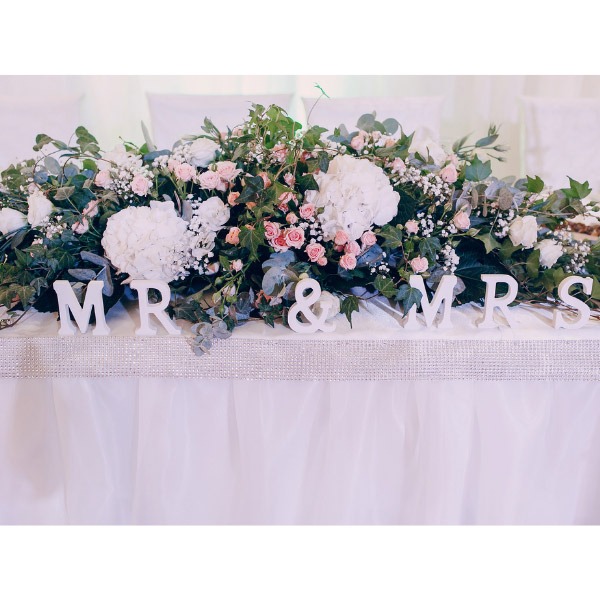
The Craft of Floral Artistry
7 Key Principles of Floral Design for You
At Forever Yours Flowers & Event Planning, we’ve perfected the art of artificial blooms. Crafted from materials like paper, glass, metal, and even kangaroo leather (yes, really!), our handcrafted designs bring lasting beauty.
Some love fresh flowers for their fragrance and charm. Others enjoy stunning, allergy-free blooms that stay flawless year-round. Artificial flowers offer timeless elegance for any occasion.
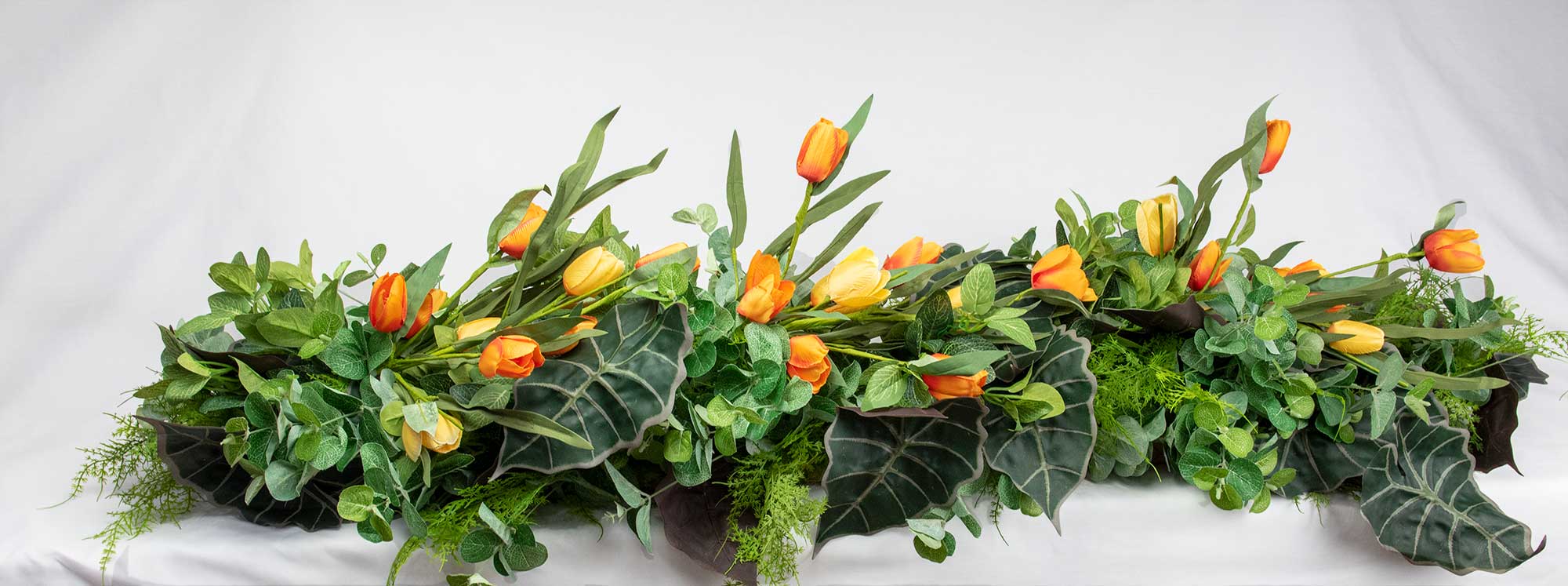
Bridal Table Runners in green with added Foliage and yellow & orange tulips and YES, I'm fake
the Basics of Design
When we start planning our wedding style, we all do the same thing—dive headfirst into Instagram, Pinterest, Facebook, or YouTube like detectives hunting for clues. We want our big day to be nothing short of magical, a true reflection of us.
And, let’s be honest, we secretly want our friends and family to still be talking about it long after the cake is gone and the dance floor has recovered. We don’t want a cookie-cutter wedding—we want something that wows.
So, to help you out, I’ve put together some key design principles.
Think of them as your wedding style cheat sheet—helping you take those Pinterest-worthy ideas and tweak them into something that screams you and your partner (instead of "I've seen this a million times before"). Contact us if you need some help starting
1. Balance
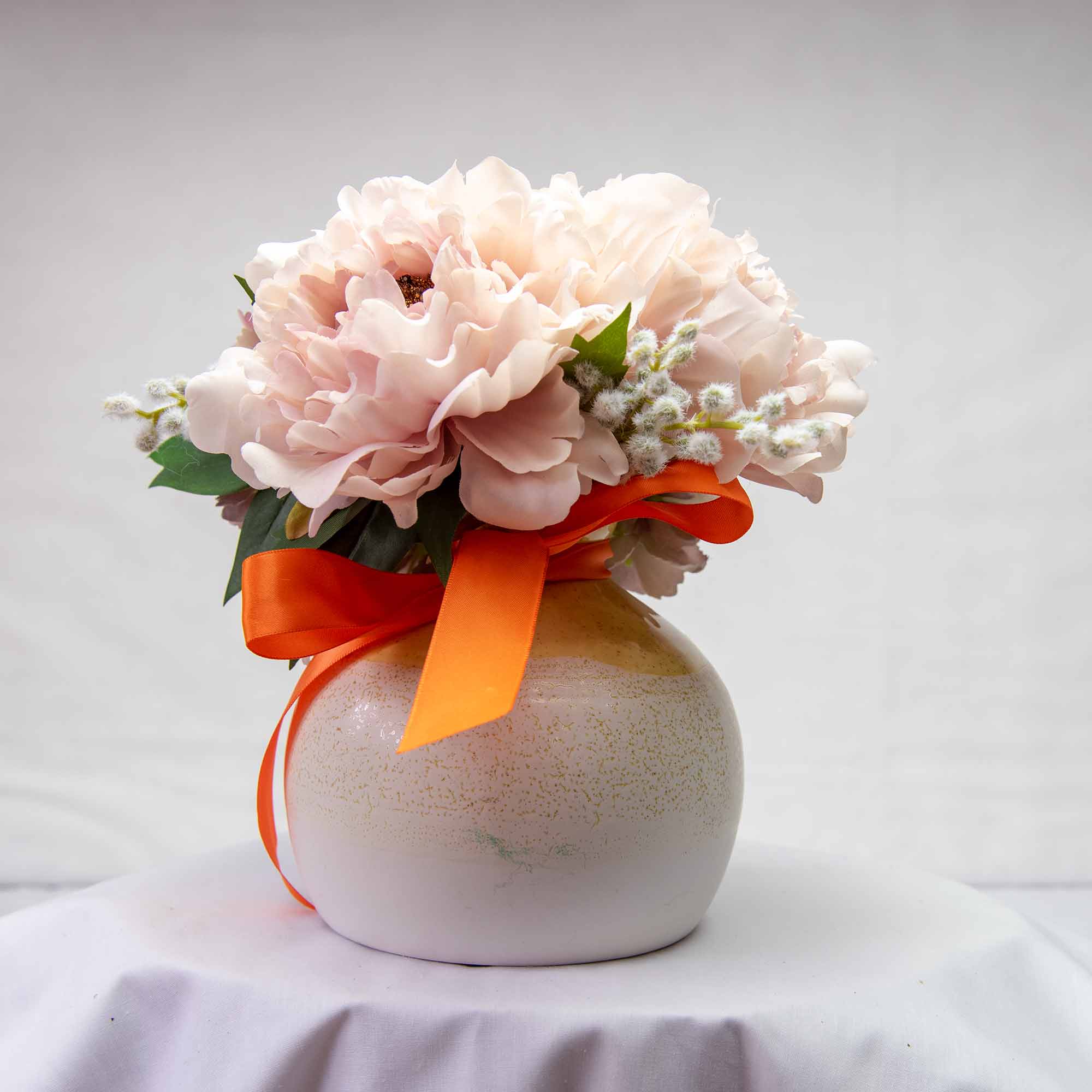
A physically and visually Balanced Design and is even on both sides or symmetrically balanced.

An asymmetrical design allows for you to have something that is uniquely yours. The Design has a flow and movement to it that allows you to stop and admire your flowers. We all want our guests to stop and admire our wedding.
The Art of Balance in Floral Design
Floral design thrives on balance, both physical and visual. Mastering these elements ensures your arrangements are both sturdy and stunning.
Physical Balance
While visual harmony is key, structural stability is just as crucial. An unbalanced arrangement is more likely to topple, especially in a wedding setting where guests might get a little too enthusiastic. A top-heavy bouquet in a delicate vase? A disaster waiting to happen.
By incorporating different shapes, you enhance the beauty of your arrangement while keeping it secure.
Visual Balance
People react to design based on what feels right. If something looks off, they may not know why, but they’ll notice. Instead of saying, Wow, that’s gorgeous! they’ll think, It’s nice… but not for me.
Visual balance comes in two forms: symmetrical and asymmetrical.
- Symmetrical Balance – Achieved by placing equal materials on either side of a central axis. This creates a formal, classic look.
- Asymmetrical Balance – Uses varied elements positioned around an invisible axis while maintaining equal visual weight. This approach feels more dynamic and modern—think of a crescent moon arrangement.
A well-balanced floral design doesn’t just look good—it feels right.
2. Scale
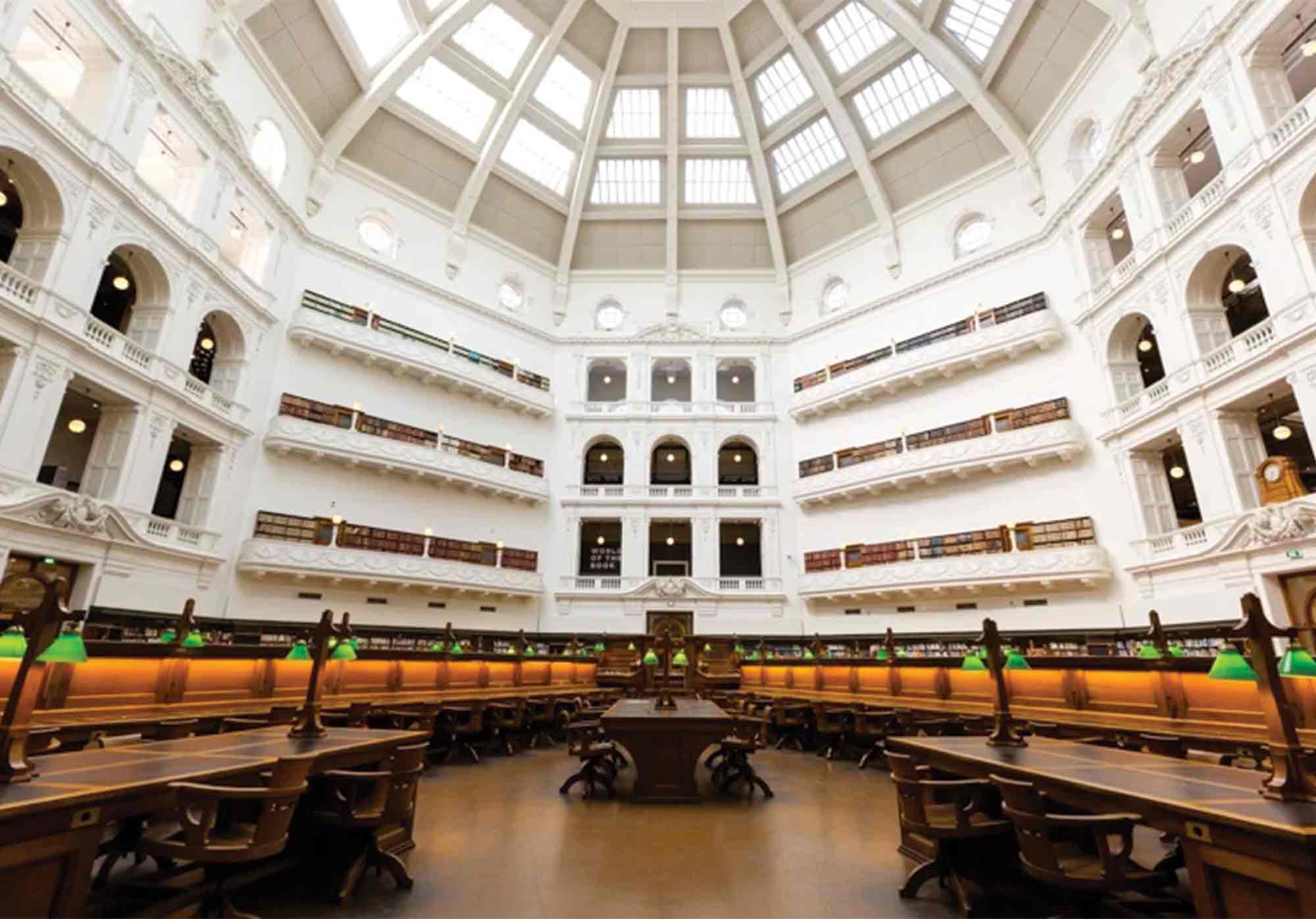
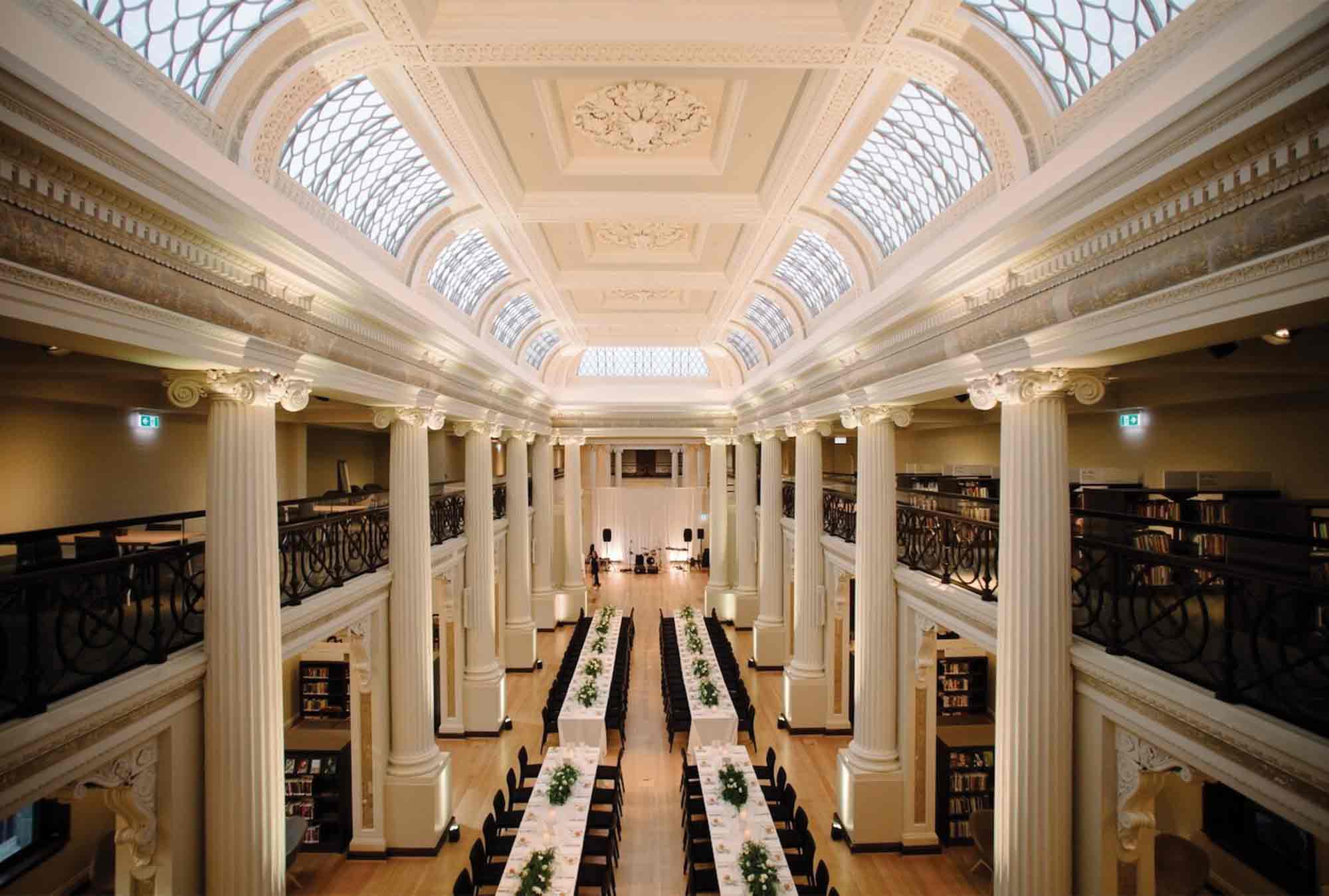
If we were to place small round table in this area they could look extremely out of place. Long rectangular tables elongate the room and create a community feeling. Also, tall 1.2m to 1.5m guest table decorations look in proportion with the room
Understanding Scale in Floral Design
Scale in floral design has two key interpretations, both equally important.
The first relates to how the arrangement fits within its setting. A tiny bouquet in a grand ballroom can get lost, while a well-proportioned design enhances the space beautifully.
The second interpretation involves variation—blending different sizes, colours, and textures to create a smooth transition. Moving from small to large, light to dark, or soft to bold adds depth and visual interest to your arrangement.
3. Proportion
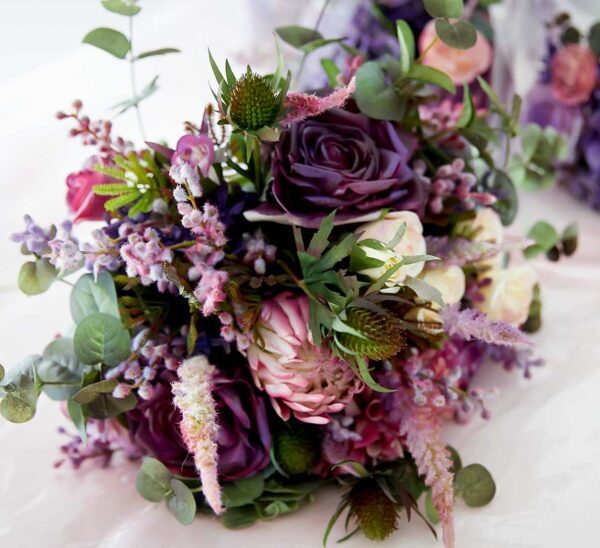
In this design there are a variety of different size artificial flowers used to give this bouquet a symmetrical feel while in proportion with the scale of the design
Proportion vs. Scale in Floral Design
Proportion and scale go hand in hand, yet each plays a distinct role.
Scale considers how the floral arrangement fits within its surroundings, ensuring it complements the space.
Proportion, on the other hand, focuses on the size relationship between the elements within the arrangement itself.
A single oversized bloom among delicate, petite flowers can feel unbalanced. Likewise, the amount of floral material should suit the container, and the height should harmonise with the width for a well-proportioned design.
4. Dominance/Emphasis
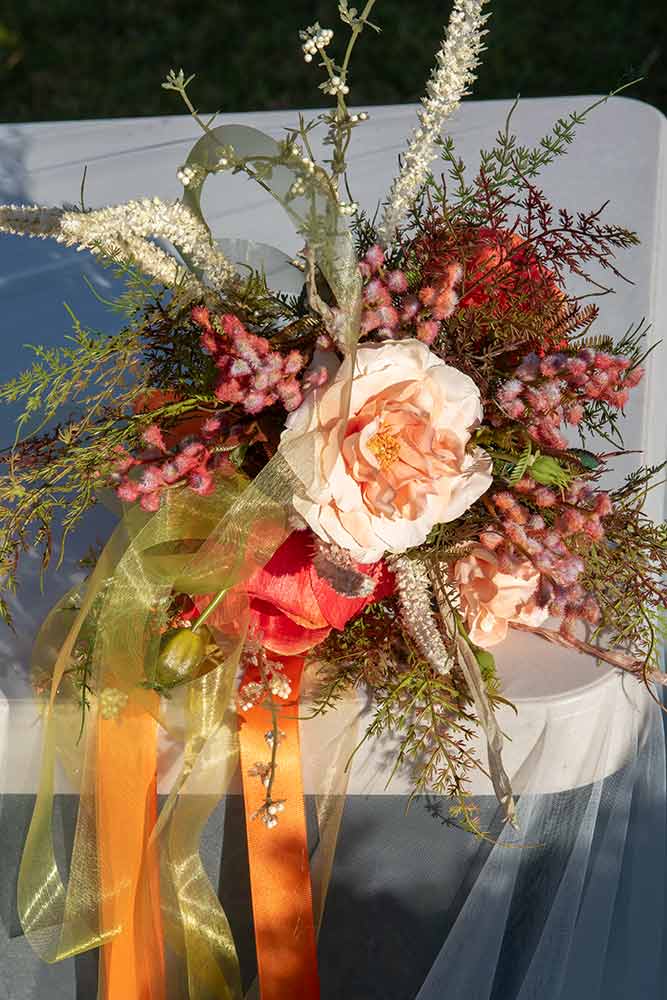
Hannah wanted her flower-girl for have a bouquet while keeping the weight down. Flower-girls are not very happy with a bouquet that they are having trouble holding up.
Creating a Focal Point in Floral Design
A well-crafted floral arrangement should have a clear focal point—the main feature that naturally draws the eye.
Emphasis is achieved by introducing contrast in size, colour, or texture. In this bouquet, a stunning pale peach silk peony served as the dominant flower, surrounded by smaller blooms for balance.
To enhance the burnt orange, green, and natural wedding theme, an orange ribbon was added, tying the design together beautifully.
5. Rhythm
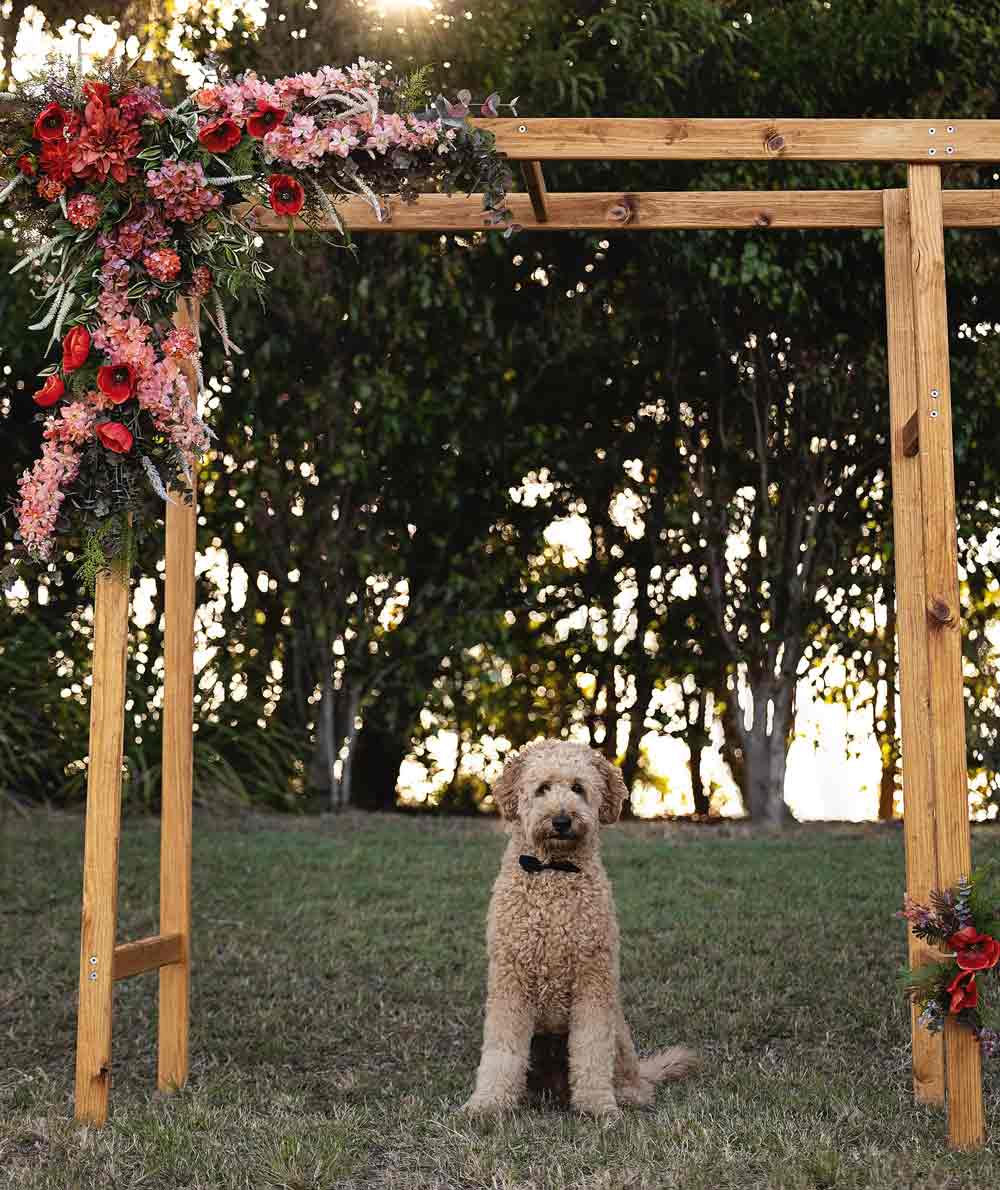
This arch design has a rhythm to allow the pup to be the centre of the photo. It's like a circle with the fur baby in the middle
Rhythm in Floral Design
Rhythm in floral design creates a sense of movement, guiding the eye smoothly through the arrangement.
The focal point draws attention first, then the elements flow naturally, connecting one part of the design to another. This movement creates harmony, making the arrangement visually engaging and effortlessly appealing—often without people even realising why. They simply feel a sense of ease and enjoyment.
Rhythm is achieved through gradation (subtle shifts in size, colour, or texture) and repetition (consistent patterns) arranged in a linear direction. This structured flow gives the design a balanced, calming effect while keeping the viewer’s eye moving seamlessly.
6. Contrast

The bottle green of the bridesmaid's dresses with the natural look of the flowers contrast beautifully with Amy's white lace wedding dress. A perfect example of design contrast in one image.
The Power of Contrast in Floral Design
Contrast uses opposing or distinct elements to highlight differences and create visual interest.
In a wedding setting, contrast makes key features stand out—just like Amy’s wedding dress against the bridesmaids’ dresses and floral arrangements. She’s the star of the day, and the design ensures all eyes are on her.
Much like dominance, contrast can be applied through various design elements, including shape, colour, size, and texture, enhancing depth and dimension in floral arrangements.
7. Harmony

Hand-painted, personally designed artificial flowers are in harmony with the Mr & Mrs sign and weddings are about harmony and celebration.
Harmony in Floral Design
Harmony is the natural outcome when all six design principles come together seamlessly.
It’s achieved when flowers, foliage, and accessories blend effortlessly, creating a visually pleasing and cohesive arrangement. When every element complements the others, the design feels balanced, polished, and complete.
Our florist artisans will work with you to create a unique arrangement that reflects your style and dream for your wedding.
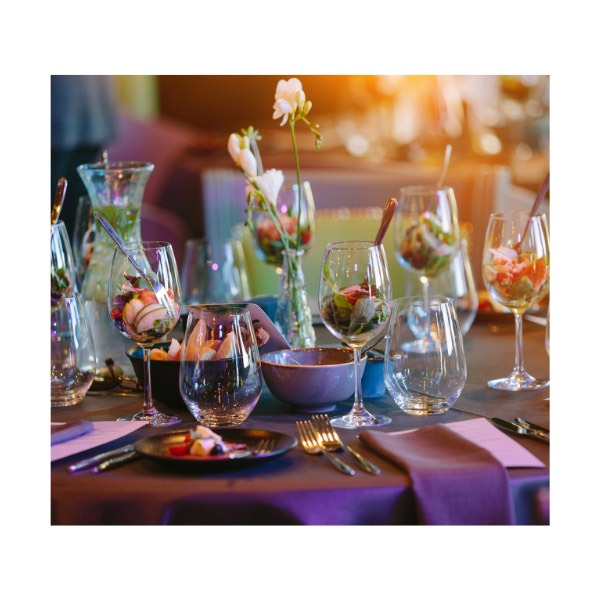
At Forever Yours Flowers and Event Planning we pride ourselves on our ability to provide high quality floral arrangements for purchase and for hire.
We take great care in selecting only the finest flowers and foliage to ensure that each bouquet is as stunning as the last.
Check out our Blog article on 10 Benefits of using Artificial Flower for your wedding
or check out our latest designs on Instagram
